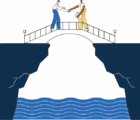
As of August 2024, the National Oceanic and Atmospheric Administration’s (NOAA) 2024 Atlantic Hurricane Season forecast predicted an above-normal hurricane season this year with a range of 17-25 total named storms. Of those, eight to 13 were forecast to become hurricanes, including four to seven major hurricanes (category 3, 4 or 5). Insured losses from hurricanes continue to rise such as with Hurricane Beryl in the U.S. where estimates of insured losses have increased to $2.7 billion-$4.5 billion as of August 2024. With the increase in frequency and severity of hurricanes, many are turning to alternative risk transfer solutions such as parametric insurance for coverage.
Parametric insurance, a type of index-based insurance, is gaining increased attention for CAT risks and offers quick payouts based on predefined triggers like wind speed or rainfall levels, rather than actual losses. It is a fast-growing market; as of 2022, the parametric insurance market was valued at $12.2 billion and is expected to reach $29.1 billion by 2032, at a compound annual growth rate of 9.2%, according to DataHorizzon Research. However, one example from Hurricane Beryl underscores the issue of basis risk associated with parametric insurance. A $150 million CAT bond sponsored by Jamaica did not trigger a payout despite significant damage because the air pressure threshold was not met.
What this means for actuaries: While parametric insurance offers faster payouts and flexibility, it poses challenges for actuaries. These include managing basis risk, where payouts may not align with actual losses; pricing, which requires analyzing index data and financial impact beyond historical information; and ensuring data reliability from independent, unbiased sources like national weather services or specialist firms. Actuaries must understand the data and any potential biases to establish accurate indices.
Sources:
- https://www.propertycasualty360.com/2024/07/16/early-hurricane-beryl-loss-estimates-top-2-7-billion-in-u-s/?slreturn=20240726154020.
- https://www.climate.gov/news-features/blogs/enso/how-does-noaa-see-2024-atlantic-hurricane-season-shaping
- https://datahorizzonresearch.com/parametric-insurance-market-2549.
- https://www.artemis.bm/news/hurricane-beryl-not-expected-to-trigger-jamaica-cat-bond-loss-plenum-confirms/.











